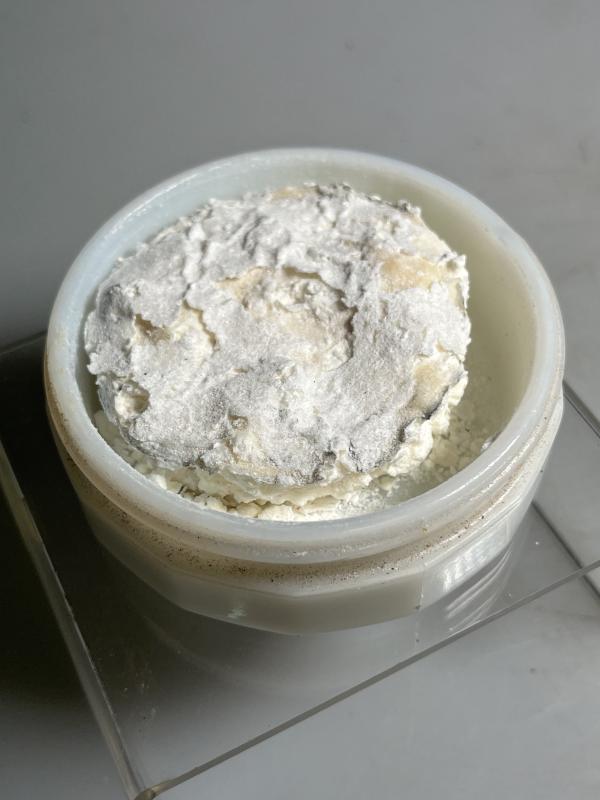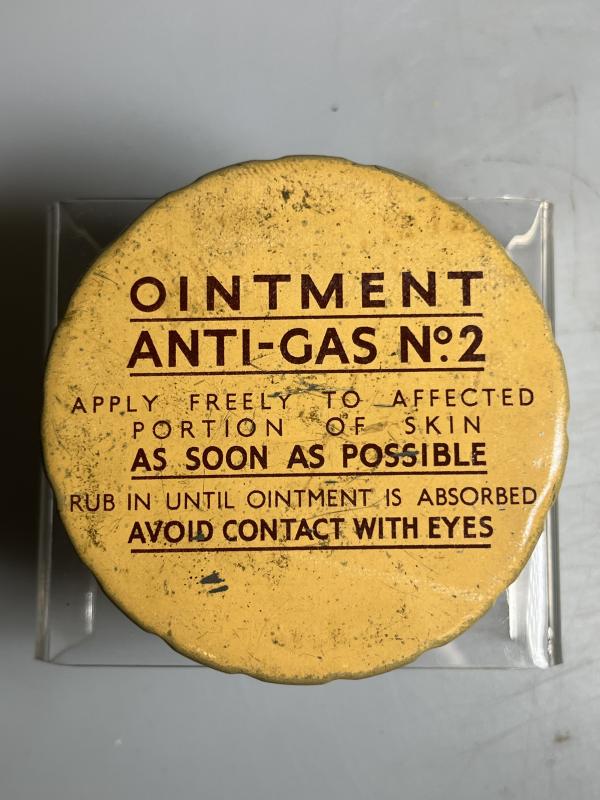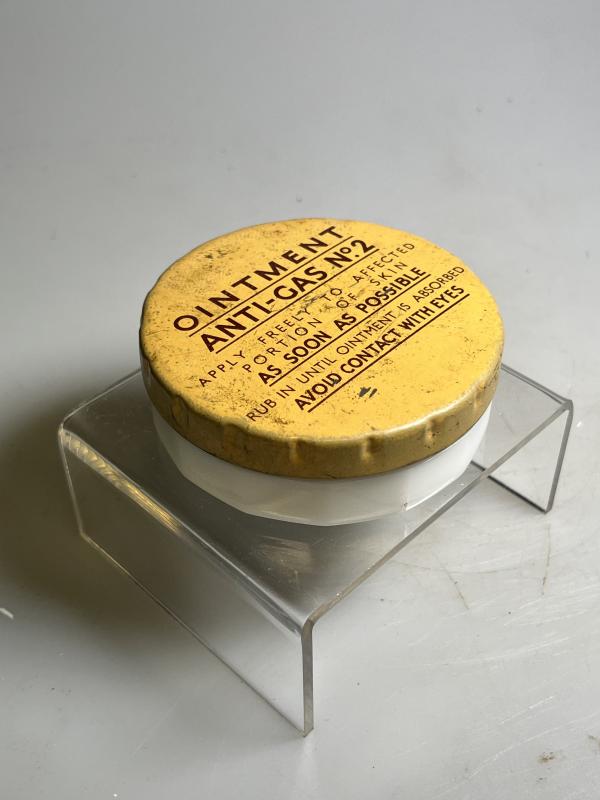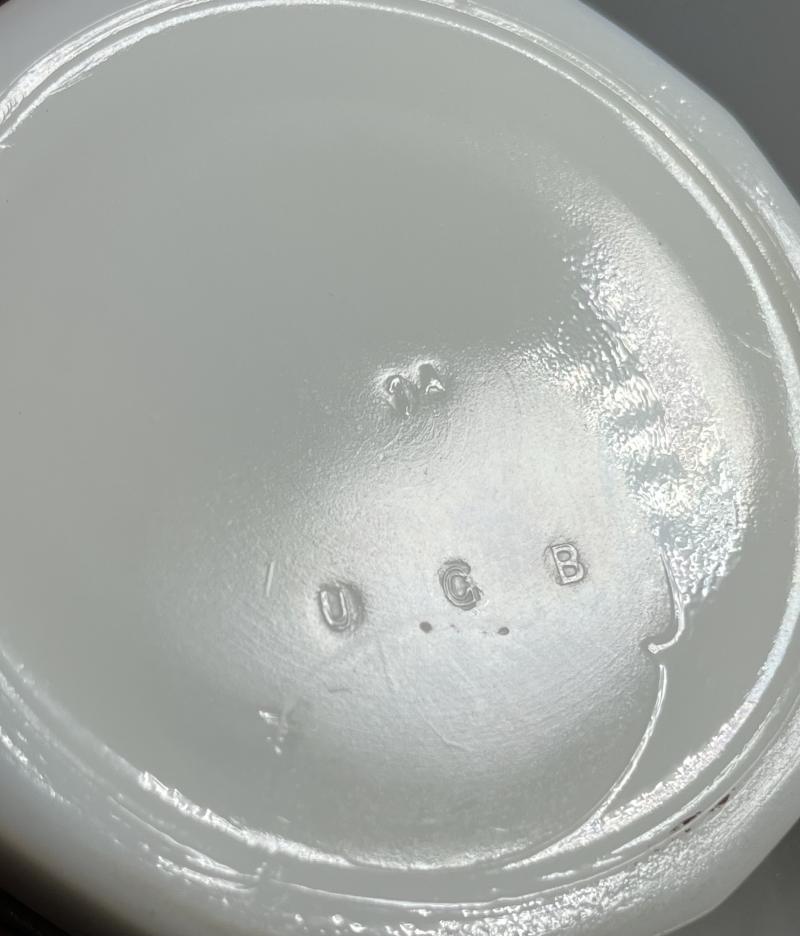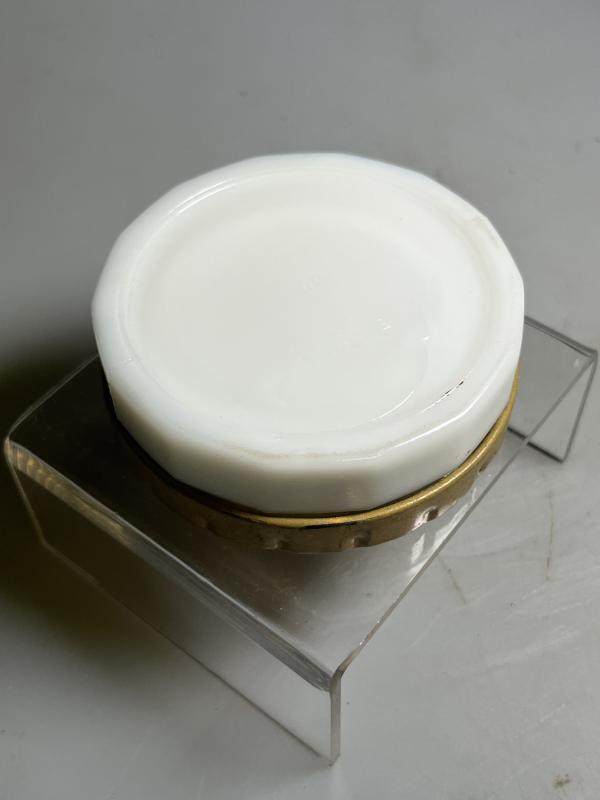WW2 British, Ointment Anti-Gas No.2, Glass Jar Variant, Coloured Coded ‘Cream’.
Was £65 now £55
Anti-gas ointments were developed to protect troops from the effects of blistering gases and could be used as a preventative (applied in anticipation of an attack) or curative (applied to blisters after an attack). The ointment consisted of a strong alkali to neutralise acidic blistering agents and could also be used to decontaminate weapons and equipment. Personnel were issued with two tins; one to be stored in the haversack and the other in the pocket of the anti-gas cape. The ointment itself was predominantly manufactured by ‘British Drug Houses’ (sometimes stamped BDH) with most of the tins being made by the ‘Metal Box Co. and stamped with MB or the number 12.
Ointment Anti-Gas No.2 is by far the most common anti-gas ointment used in WW2 and could even be purchased in a civilian form via chemists. Initially supplied in a glass jars, using white or brown glass, with a metal lid and later replaced by tubes held in a flat rectangular tin. The glass jars continued to be issued to Police and civilian organisations whilst the tins were issued to the armed forces. The ointment itself was a mixture of Chloramine-T and vanishing cream.
This rare early example of the white glass jar (manufactured by UGB) variant is priced to reflect its rarity, excellent condition with the addition of its contents.
Code: 285


